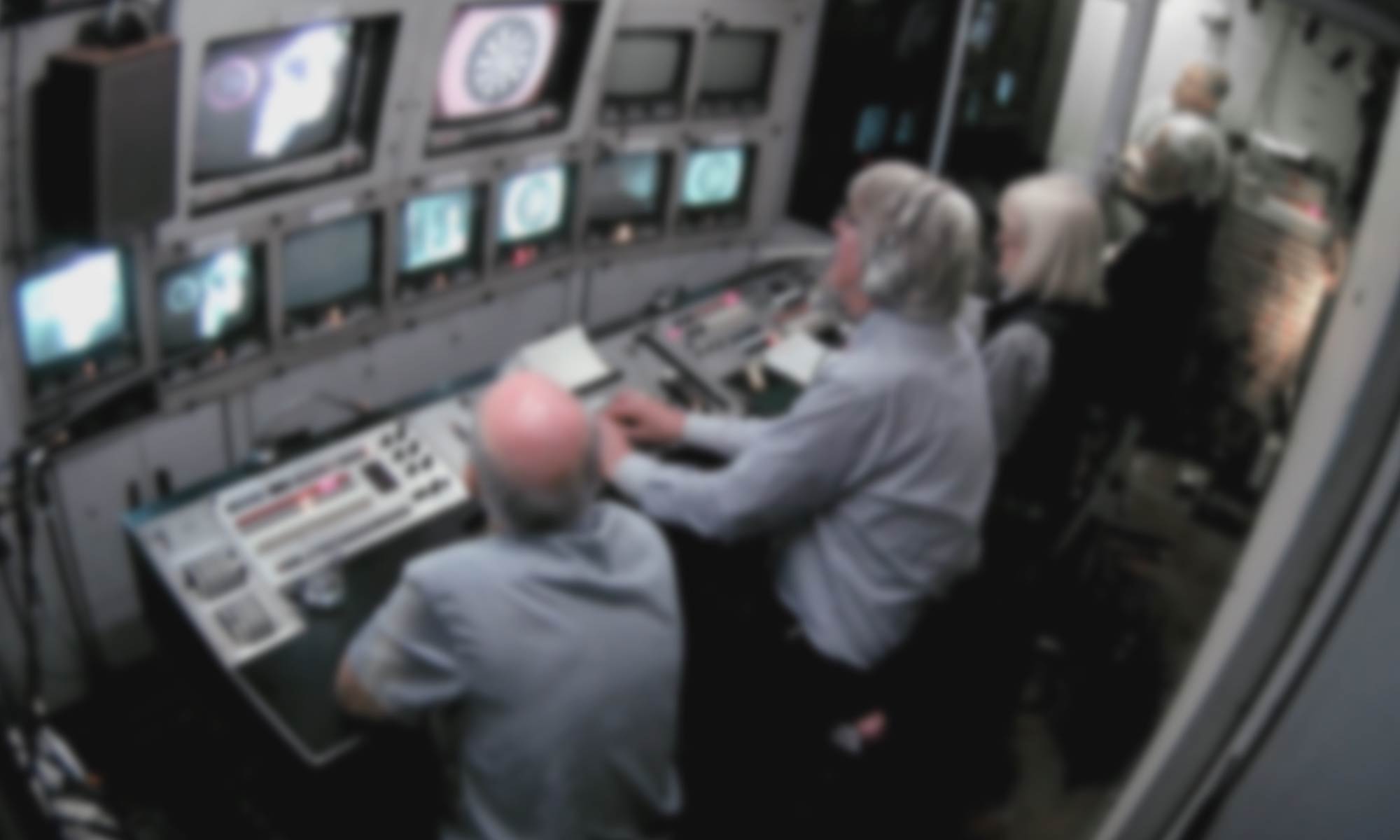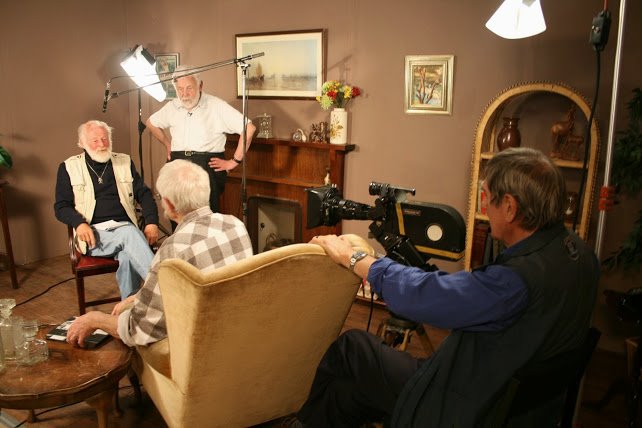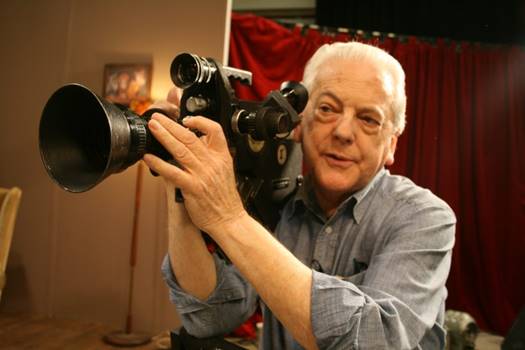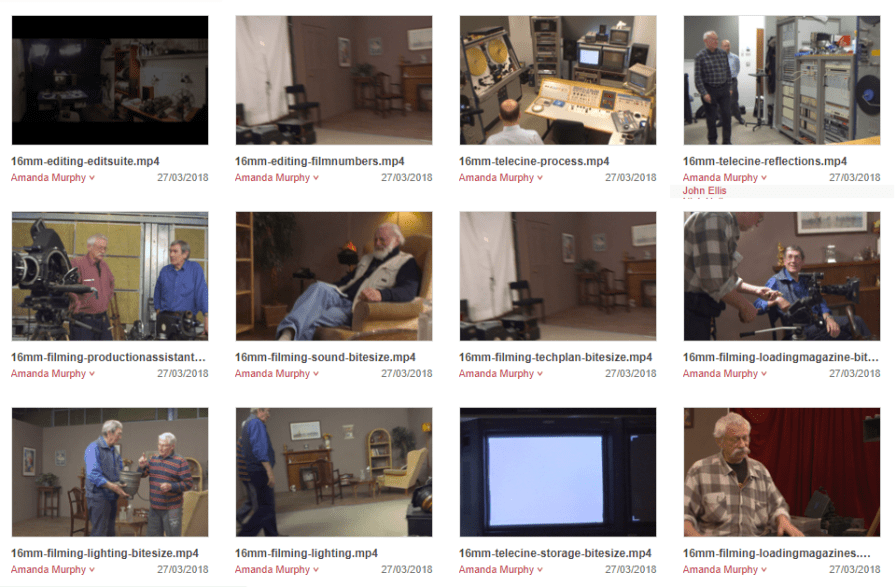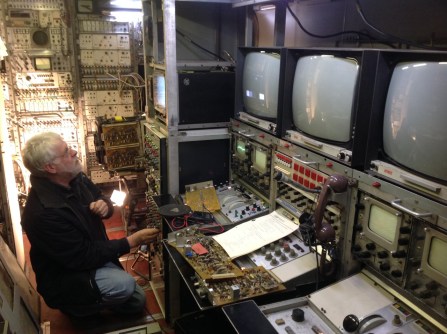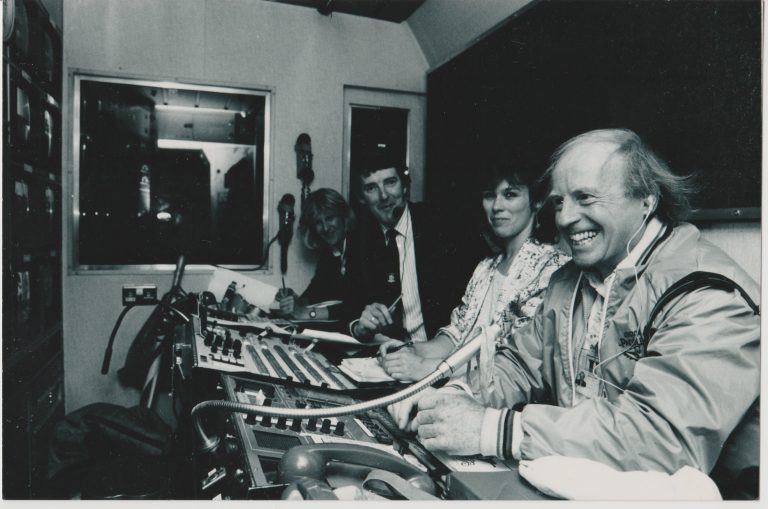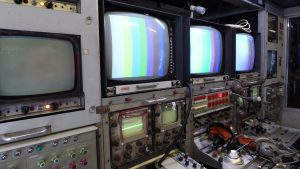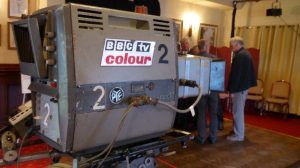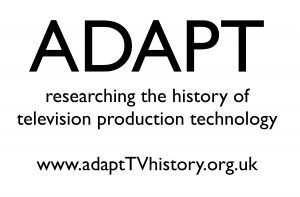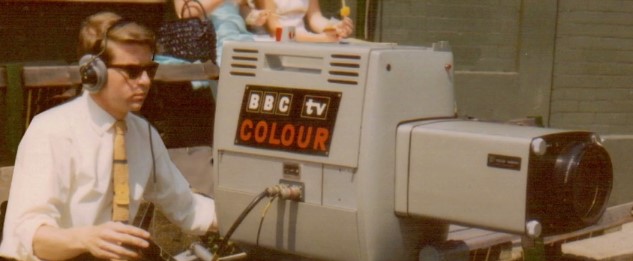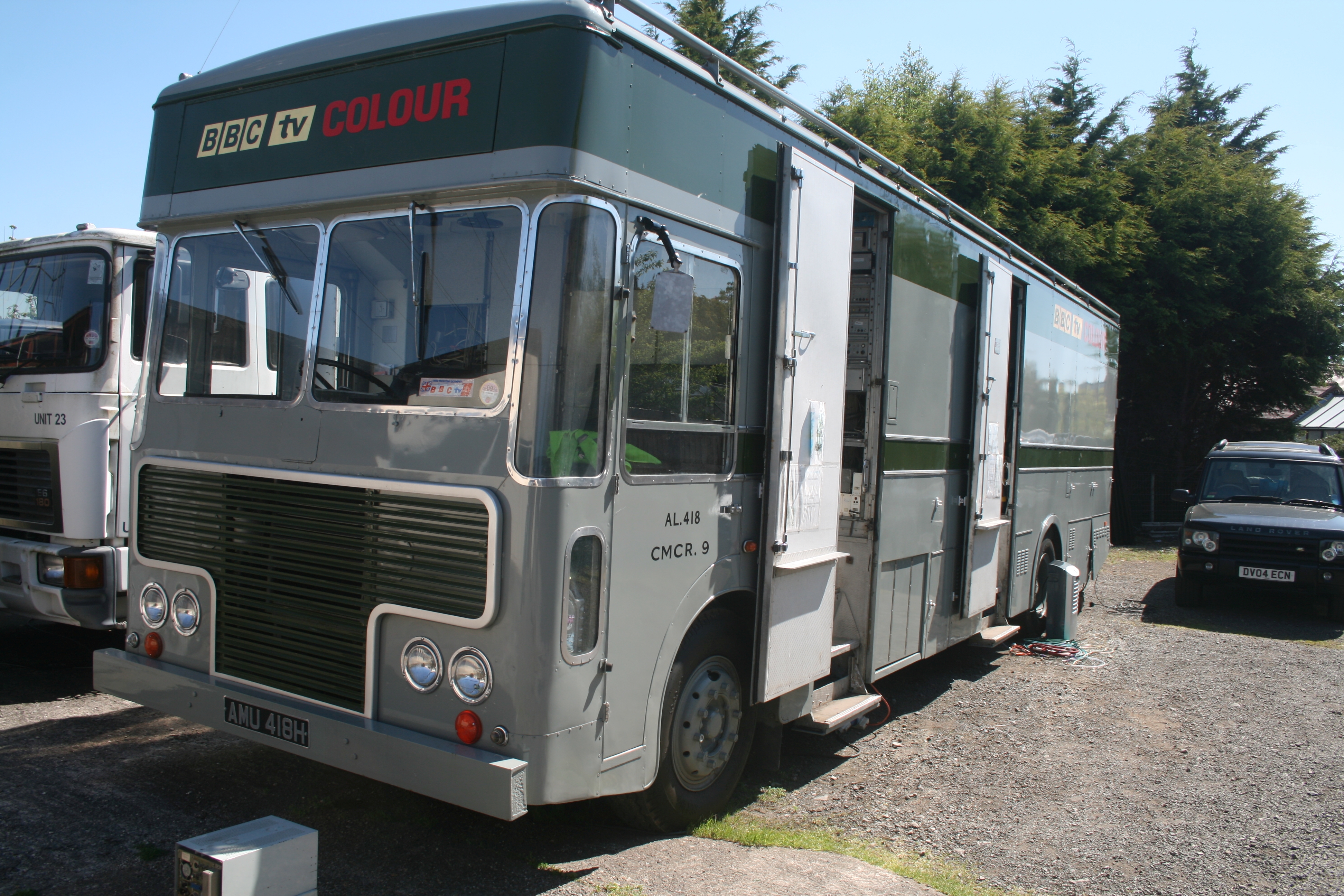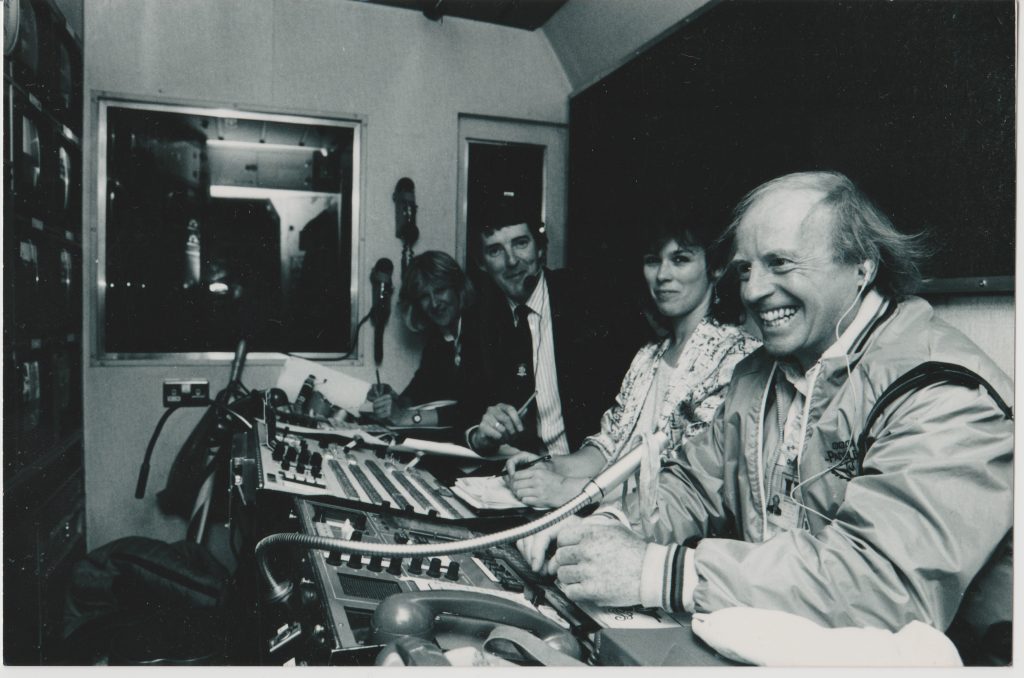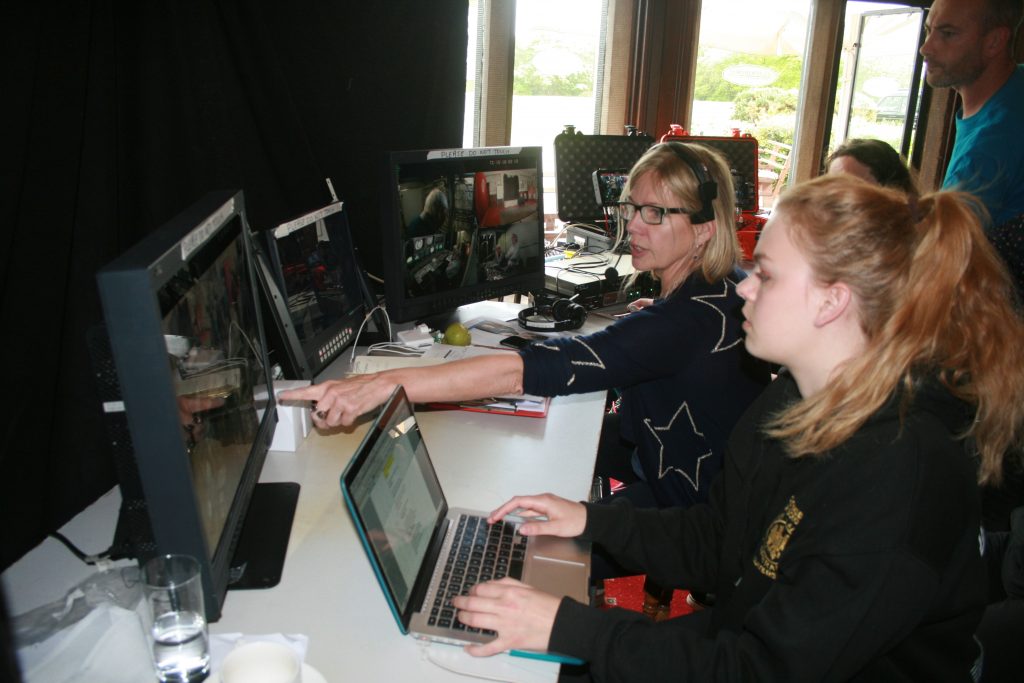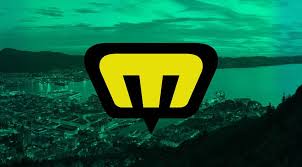by John Ellis, Royal Holloway University of London
Originally published on https://learningonscreen.ac.uk/viewfinder/articles/adapt-how-television-used-to-be-made/
Suddenly it is hard to avoid an encounter with TV material created using analogue technologies.
• BoB contains several thousand analogue-originated programmes
• Organisations as diverse as Kaleidescope, BBC Archive, Ident Central, Talking Pictures TV and Network Distributing are all actively engaged in making old programming available
• YouTube contains vast amounts of analogue TV, much of it posted informally from private collections of VHS tapes
• The substantial amounts of ITN news material, once curated by Learning on Screen for Jisc, is now available again through Proquest’s Alexander Street subsidiary
Thanks to widespread digitisation programmes, huge amounts of archive are now available. Digitisation makes old programming visible, but at the same time it obscures how those programmes were made.
How TV got made in the analogue era has now become an urgent question for anyone wanting to understand or use this footage, whether for teaching, historical research or enjoyment, or even for its value as data. To make TV used to be a rare and difficult activity. TV production required expensive and cumbersome technologies that needed teams of skilled individuals to work them, and the resources of large organisations with the funding to afford them. The TV footage we have from the last century (and the earlier years of this century) are profoundly determined by the affordances of analogue technologies and the production systems that went with them. TV tended to record what was convenient or accessible, and in forms that were manageable and predictable. This has determined the nature of the visual record of that time: what was chosen to be shown and how it was shown.
So how can we find out how TV used to be made? There’s only so much that you can learn from looking at old equipment, and even less from photos of them. The archives themselves contain very few programmes explaining how TV used to work. Fortunately, many of the professionals from the fifties onwards are still around, and there is an international network of collectors who still maintain “obsolete” equipment in working order. It is a miracle that this equipment still works, and this is entirely thanks to these dedicated private collectors
For the ADAPT research project, we seized this time-limited opportunity to reunite working equipment with the professionals who once used it. We challenged them to make a programme as they used to. We used contemporary ‘fixed rig’ video methods (14 cameras for one shoot) to produce over 160 videos in all. They show how TV professionals in the UK filmed and edited using both video and 16mm film. The processes of both video and film as explained at www.adapttvhistory.org.uk, and all the videos can be downloaded from the repository at https://figshare.com/collections/ADAPT/3925603
We have extraordinary revelations: how quickly and economically a film crew used to work; the sheer difficulty of getting a live show on air; the crucial importance of repair and maintenance; the time and effort it took to line up cameras. We see how the 16mm Éclair camera and Nagra sound tape recorder revolutionised what was possible. We see how one (energetic) person can run an entire film lab. Our footage enables a comparison between film and videotape editing, as well as an appraisal of AVID’s early digital system. It shows the combination of many different items of equipment that were required to make the simplest of sound and image material, the heavy cables, the cumbersome tapes, the long waits for equipment to warm up.
We concentrated on the everyday production of everyday TV, to present examples that were as typical as possible. The equipment used is mainly British or European and the professionals involved had all once worked for the BBC. But the work routines and the basic arrays of equipment were similar even then. Many of the crews interact in ways that are startlingly similar to those reported by Beth Bechty in her ethnographic studies of US freelance film crews in the early 2000s. They show the same rituals of exaggerated politeness and mutual respect. The biggest difference is in the social composition of the professional group we were calling on: they were overwhelmingly male and white.
The equipment (and some of the attitudes) may be from another era, but this work is no exercise in historical recreation akin to a Civil War battle recreation. Instead it is a combination of hands on history and memory work. These professionals recall past actions that, more often than not, are deeply embedded in body memory. The additional challenge to create again brings forward all their professional skills. The participants are ‘playing’ their younger selves, encountering long abandoned equipment: “Come to Daddy” says one of the cinematographers, unselfconsciously, on picking up the Éclair camera.
Our videos are edited to different lengths: a bitesized two minutes that can be used in a lecture; a medium length for seminar use and full length versions for research and concentrated study. Taken together they show clearly why archival TV is as it is: they reveal the strengths and limitations of a whole, lost, era of television production. It was an era when filming was not the commonplace activity it is now. As it involved scarce resources, large expenditure, and highly specialized skills, the decision to film was a weighty one that involved considerable planning. When you watch these professionals at work, and see their demonstrations of the equipment they wrestled with, it seems remarkable that they achieved so much.
In the next few months, a series of publications will appear relating directly to the project: articles in the online peer reviewed journal VIEW using some of the videos, and a book Hands on Media History (Ed. N.Hall and J.Ellis, Routledge 2018), including essays on the methods we adopted from video director Amanda Murphy and project researcher Nick Hall. This material can serve as a guide for those students and researchers fortunate enough to have access to hands on collections of old equipment. There is a growing network of ‘hands on history’ collections which allow students to handle old equipment, to better understand its limitations and capabilities. This is not yet common in the UK, but there are interesting initiatives at Groningen, Colorado and Humboldt universities.
The ADAPT videos stand on their own as a vivid witness to the analogue era. Used together with hands on collections they can help decode the relationship between different items of equipment and the mysteries of circuitry. They also reveal the common industry work-arounds that kept the show on the road. Museum display equipment may look spectacular, but if it is not maintained, it loses not only its ability to function, but also its ability to speak to us. Old footage can be valuable historical evidence, but only if the conditions of its production are properly understood. Old entertainment, drama and documentary are essential for understanding our past as well as in their own right as texts, but this can only really be achieved by understanding their own history as artefacts. The ‘How Television Used to be Made’ website and the ADAPT video collection are designed to provide the missing element of ‘equipment as it was used’ and so enable those understandings.
